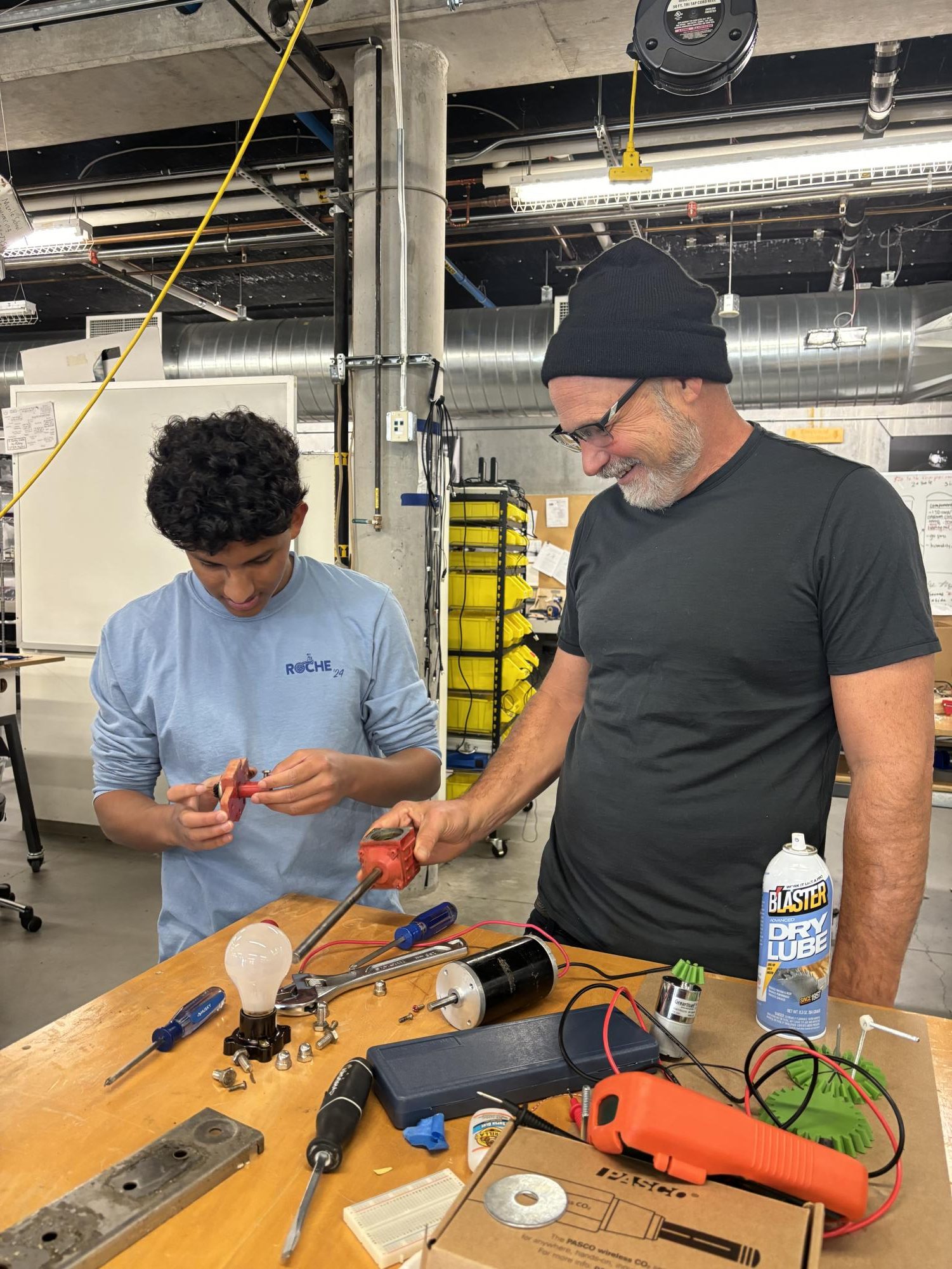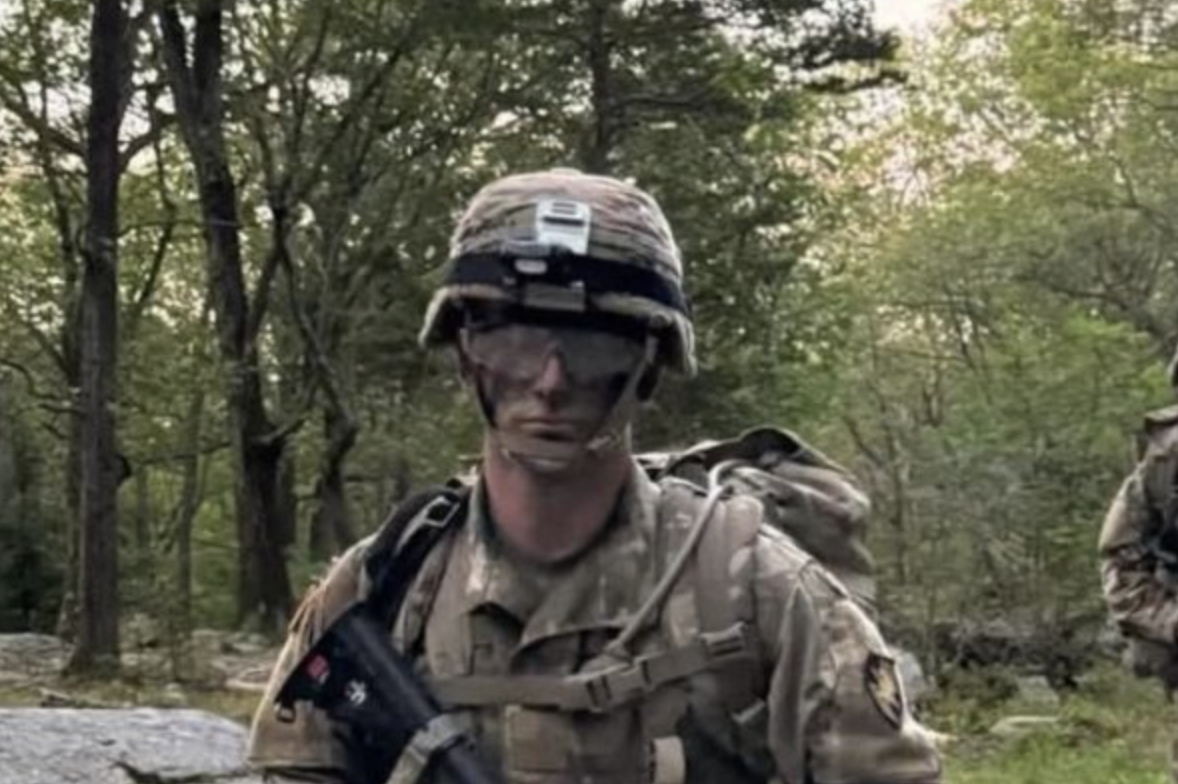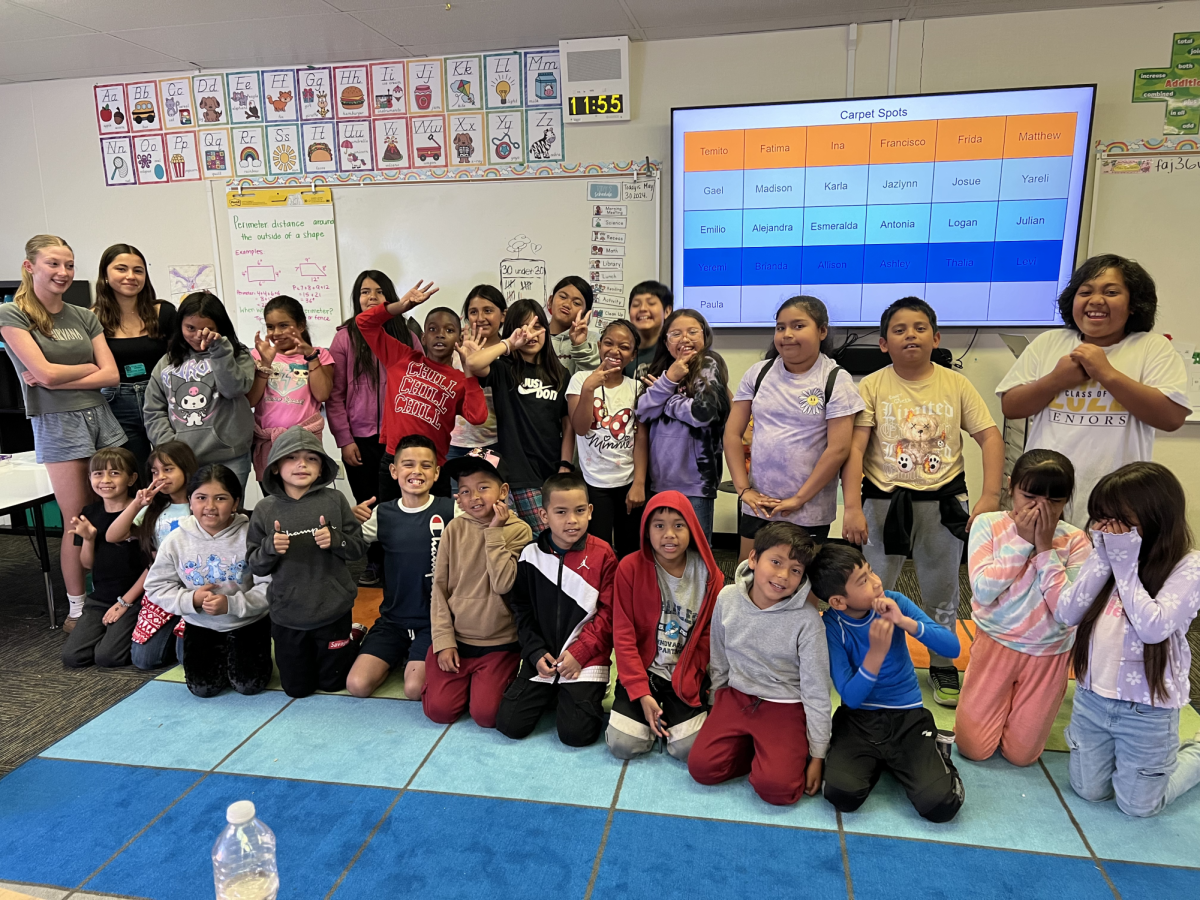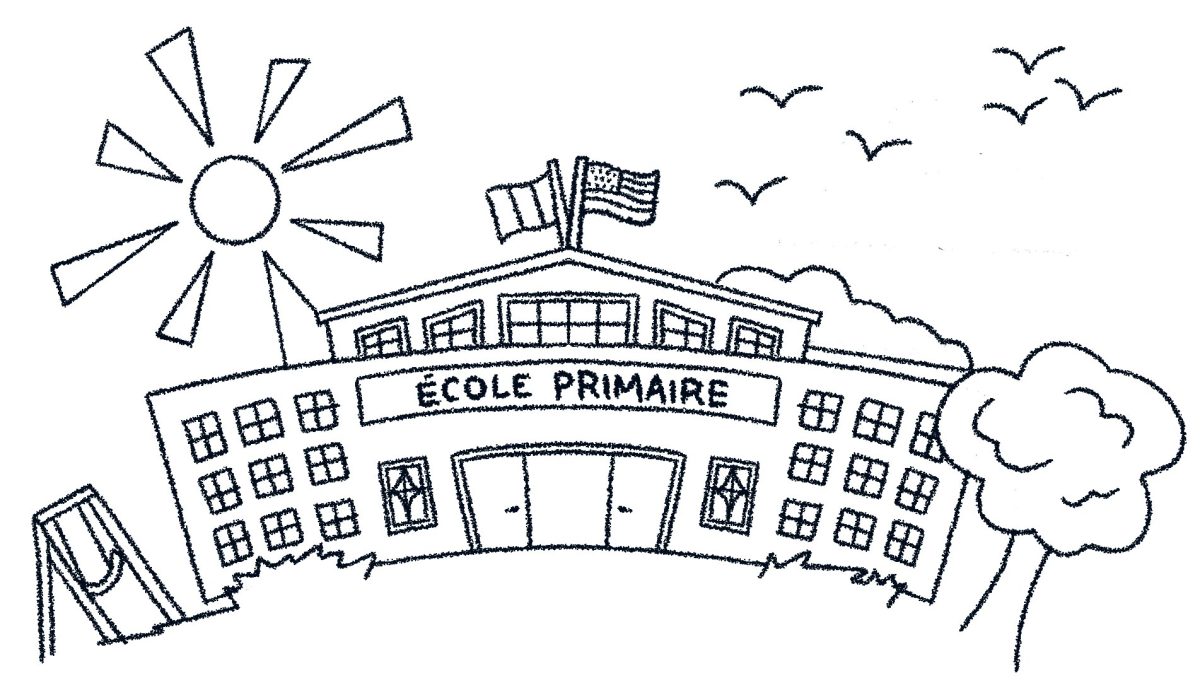Despite teaching in the heart of Silicon Valley, Applied Science Research (ASR) and engineering teacher James Dann makes a two-hour-long commute to his ranch in Vacaville every weekend. At the ranch, he can be found planting 100 olive trees or installing an inverter and solar cell array from scratch to make his farm more sustainable. A jack of all trades, Dann also waits tables to support his friend’s new restaurant and even publishes open-source materials for other teachers online. He is solution-oriented and lends a helping hand to others around him.
Dann has always been interested in how things work and what they’re made of, inspiring his interest in the field of physics. After receiving a Bachelor of Science in Physics from the University of California, Santa Barbara and a doctorate in particle physics from the University of California, Santa Cruz (UCSC), Dann spent four years working in the world’s largest particle physics lab, the European Organization for Nuclear Research (CERN), in Geneva, Switzerland. The space had no lab books, an untraditional style of learning that deviated from the traditional methods of memorization he grew up with and ultimately influenced his teaching style.
“I preferred to apply knowledge to situations, which is also why the department at Menlo is called Applied Science and Engineering,” Dann said.
Dann notes that CERN had an atmosphere of innovation, and scientists learned through open discussion and experimentation. Dann also worked with many Nobel Prize winners. He often presented his research findings at the famous ‘Thursday meetings’ at CERN in large auditoriums with hundreds of the world’s top scientists.
Dann fondly recalls that everyone worked in one big room with a supply of building materials and a lot of whiteboard space, allowing for quick prototyping, which was part of his vision for the Whitaker Lab. Dann’s time in Geneva played an important role in shaping his career and legacy at Menlo. “CERN was the biggest inspiration for Whitaker,” Dann said.
After leaving CERN in 1998, Dann taught at Saint Ignatius High School and UCSC. Afterward, he also worked for a magnetic field measurement company. However, he eventually realized that his true passion lay in teaching when his wife suggested he seemed unhappy coming home every day from his industry research job.
Dann was considering positions at multiple independent and public high schools and finally began teaching at Menlo around 2006. According to Dann, at the time, few schools in the country had a project-based curriculum and a “learn by doing” philosophy. Many schools rejected Dann’s proposal for a hands-on class, regarding it as unconventional. Menlo was the only school excited about his vision for a more hands-on approach to learning by creating a new class for juniors and seniors, ASR. Dann recalls the encouragement he received from Norman Colb, Menlo’s head of school at the time of his interview, when he first proposed ASR. According to Dann, Colb told him, “I want that here.”
The Whitaker Lab was built in the summer of 2012. Currently, Dann teaches ASR and both semesters of Advanced Topics in Physics — Quantum Mechanics as well as Electromagnetism and Relativity — but has taught every class in Whitaker at one point or another. According to Dann, his job at Menlo is his dream job because he gets to work in Whitaker with talented colleagues while also helping students. Dann has developed several Whitaker classes, including the popular course Mechanical and Electrical Engineering with former science teacher Marc Allard.
“I’m proud of the inclusive atmosphere we’ve developed in the Whitaker Lab, where everyone can do it and everybody has the same challenges. It’s a place where all the kids can take a shot at it,” Dann said.
Not only did Dann create the Whitaker Lab, but he also wrote the People’s Physics Book (PPB) in collaboration with his dad. Dann felt strongly about the high costs of textbooks, as he paid for college on his own by working night shifts. He believed education should be free for all. After two years of hard work, he and his dad published the book in 2006. Alongside physics teacher Deb Jensen, Dann edited the PPB to make it appropriate for Menlo students and published the Menlo edition in 2008. The PPB is still an integral part of Menlo’s Physics 1 curriculum today.
In his spare time, Dann has an array of interests: he collects stamps from Italy, France and the United States, works on his ranch in Vacaville and most recently started working night shifts to help his friend start a new Italian restaurant, Pizzeria Cardamomo, in Redwood City. On his ranch, he loves to watch his olive trees grow throughout the seasons and just be in nature.
“Most of the meals [I have on the farm] is the venison I’ve hunted, or the vegetables I’ve planted. […] On farms, you have infinite opportunities to create your own paradise,” Dann said.
Last summer, Menlo seniors had the opportunity to participate in Climate Lab, a newly created MTerm class about sustainable agriculture featuring an overnight trip to Dann’s ranch. Many students felt their time on the ranch was an invaluable part of the MTerm course. “Dr. Dann is a super nice guy and made it an experience everyone could enjoy,” senior Jamie Forese said.
Students aren’t the only ones Dann has made an impact on. According to Allard, Dann has inspired teachers to help their students develop a passion for science and engineering through hands-on learning.
“He’s the one that was really inspiring me to try to aim higher […] to really try to inspire kids,” Allard said. “Whenever he ends up retiring, that’s gonna be a really tough day for Menlo, because there’s some really big shoes to fill there.”









